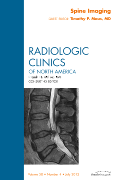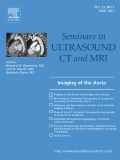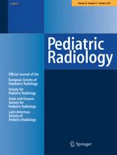
Radiologie
Scope & Guideline
Exploring the Future of Radiology and Nuclear Medicine
Introduction
Aims and Scopes
- Diagnostic Imaging Techniques:
The journal covers a wide range of diagnostic imaging modalities including MRI, CT, ultrasound, and X-ray, with an emphasis on their applications in various medical conditions. - Interventional Radiology:
Publications often explore advancements and techniques in interventional radiology, including minimally invasive procedures and their clinical implications. - Forensic Radiology:
There is a notable focus on forensic radiology, discussing imaging techniques and case studies related to trauma and legal medicine. - Artificial Intelligence in Radiology:
The journal highlights the integration of artificial intelligence in radiological practice, exploring its role in imaging acquisition, analysis, and workflow optimization. - Pediatric Radiology:
Special attention is given to pediatric radiology, with studies addressing the unique challenges and considerations in imaging children and adolescents. - Oncological Imaging:
A significant portion of the research is dedicated to oncological imaging, including the diagnosis, treatment monitoring, and outcomes of various cancers. - Patient-Centered Care:
The journal emphasizes the importance of patient-centered approaches in radiology, discussing how imaging impacts patient outcomes and satisfaction.
Trending and Emerging
- Integration of AI and Machine Learning:
There is a marked increase in articles discussing the application of artificial intelligence and machine learning in radiology, addressing their potential to enhance diagnostic accuracy and operational efficiency. - Tele-radiology and Remote Consultations:
With the rise of digital health, the journal has seen a surge in topics related to tele-radiology, emphasizing remote consultations and the implications for patient care. - Sustainability in Radiology:
Emerging research focuses on sustainability practices within radiology departments, including the environmental impact of imaging procedures and efforts to reduce waste. - Interdisciplinary Approaches:
An increase in interdisciplinary studies showcases collaborations between radiologists and other medical professionals, highlighting the importance of integrated care in complex cases. - Focus on Health Equity and Accessibility:
Recent publications are increasingly addressing issues of health equity and accessibility in radiology, exploring how imaging services can better serve diverse populations.
Declining or Waning
- Traditional Radiological Techniques:
There is a noticeable decrease in publications focusing solely on traditional radiological techniques without the integration of new technologies or methodologies, suggesting a shift towards more advanced imaging practices. - Generalized Clinical Guidelines:
The journal has moved away from broad clinical guidelines, favoring more specific studies and innovative applications of radiology in practice, indicating a trend towards tailored approaches. - Basic Radiological Education:
Publications aimed at basic education in radiology are becoming less frequent, possibly due to the evolving nature of radiology training that emphasizes hands-on and technology-driven learning.
Similar Journals

Emergency Radiology
Pioneering Research in Critical Imaging SolutionsEmergency Radiology, published by SPRINGER HEIDELBERG, is a leading journal in the fields of emergency medicine and radiology, dedicated to advancing the understanding and application of diagnostic imaging in urgent medical conditions. Established in 1994, this journal has consistently contributed to the discourse around emergency diagnostics, maintaining a strong position within the academic community, as evidenced by its Q2 rankings in both Emergency Medicine and Radiology, Nuclear Medicine and Imaging categories as of 2023. With a distinguished focus on innovative research and case studies, it serves a diverse audience of researchers, clinicians, and healthcare professionals who seek to enhance their knowledge and improve patient outcomes in emergency settings. While the journal is not currently open access, it offers robust subscription options and continues to be an integral resource for those at the forefront of emergency care. With an ISSN of 1070-3004 and an E-ISSN of 1438-1435, Emergency Radiology is positioned to remain a key player in shaping the future of medical imaging through its commitment to high-quality research and evidence-based practices.

Insights into Imaging
Bridging Research and Clinical Practice in RadiologyInsights into Imaging is a prominent open-access journal published by SPRINGER WIEN, specializing in the dynamic fields of radiology, nuclear medicine, and imaging, with its ISSN 1869-4101. Established in 2012, the journal has established itself as a leading platform for disseminating high-quality research and innovative findings, currently holding a prestigious Q1 ranking in its category as of 2023. With an impressive Scopus rank of #42 out of 333 in the medicine discipline, the journal is positioned in the 87th percentile, reflecting its significance and influence in the academic community. Based in Germany, Insights into Imaging not only provides unrestricted access to research but also aims to bridge the gap between scientific inquiry and clinical application, making it an essential resource for researchers, professionals, and students engaged in advancing imaging technologies and practices. The journal’s commitment to fostering knowledge exchange ensures that it remains a critical contributor to the evolving landscape of medical imaging, with articles available from 2012 through 2024.

RADIOLOGIC CLINICS OF NORTH AMERICA
Connecting Knowledge and Practice in Radiology.Radiologic Clinics of North America, published by W B Saunders Co-Elsevier Inc, stands as a pivotal resource in the field of medical imaging and radiology. With a solid history dating back to 1963 and converging years extending to 2024, this journal has established itself as a reputable platform for original research, comprehensive reviews, and insightful discussions that advance the knowledge and practice of radiology, nuclear medicine, and imaging. Holding a Q2 classification in both the miscellaneous medicine and radiology categories and positioned within the 56th percentile among its peers, its contributions are vital for both academic research and clinical applications. Although it does not offer open access, the journal remains accessible through institutional subscriptions and is a must-read for researchers, healthcare professionals, and students keen on the latest developments in radiological practices. With a dedicated editorial board and a commitment to the highest academic standards, Radiologic Clinics of North America continues to shape the future of the medical imaging field.

Journal of the Belgian Society of Radiology
Highlighting Essential Findings in Radiological PracticeThe Journal of the Belgian Society of Radiology, published by UBIQUITY PRESS LTD, is a pivotal resource in the field of radiology, nuclear medicine, and imaging. With an ISSN of 2514-8281 and E-ISSN of 2514-8281, this open access journal has been dedicated to fostering the dissemination of high-quality research since its establishment in 2010. Distributed from the United Kingdom, it offers a platform for innovative studies, case reports, and reviews that contribute to the advancement of radiological sciences. Despite its current Q4 category ranking within Scopus, the journal plays a critical role in sharing essential findings with a community of over 1,200 professionals and students eager to stay abreast of emerging trends and technological advancements in imaging. By enabling unrestricted access to its publications, the journal encourages collaborative research and knowledge exchange that transcends geographic boundaries, solidifying its importance for both established researchers and emerging scholars in the discipline.

SEMINARS IN ULTRASOUND CT AND MRI
Innovating Insights in Ultrasound, CT, and MRISEMINARS IN ULTRASOUND CT AND MRI is a prestigious academic journal dedicated to advancing the fields of radiology, nuclear medicine, and imaging. Published by W B SAUNDERS CO-ELSEVIER INC, this journal has been a cornerstone of scholarly communication since 1984, providing a platform for high-quality research and review articles that enhance the understanding of diagnostic imaging techniques. With a current impact factor reflected in its Q3 quartile ranking among 333 journals in its category, it remains a valuable resource for researchers and clinicians alike. The journal's focus includes but is not limited to innovations in ultrasound, computed tomography, and magnetic resonance imaging, making it essential for professionals looking to stay at the forefront of imaging science. While it operates under a subscription model, its extensive archive of influential articles ensures ongoing access to critical knowledge and developments in the field. With a commitment to quality and relevance, SEMINARS IN ULTRASOUND CT AND MRI continues to contribute significantly to the evolving landscape of medical imaging.

Diagnostic and Interventional Imaging
Transforming Insights into Innovative Imaging SolutionsDiagnostic and Interventional Imaging, published by Elsevier Masson, stands as a prominent journal in the fields of Radiology, Nuclear Medicine, and Imaging. With a significant impact factor and a reputation for high-quality research, this journal is dedicated to advancing the understanding and application of diagnostic and interventional imaging techniques. It has achieved an impressive Q1 ranking across multiple categories including Medicine (miscellaneous) and Radiological and Ultrasound Technology, demonstrating its esteemed position within the academic community. The journal features cutting-edge studies and reviews, reflecting the latest innovations and practices from 2012 to 2024. Researchers, healthcare professionals, and students alike can look forward to accessing valuable insights that drive forward the discipline and improve patient outcomes, as evidenced by its robust Scopus rankings placing it among the top journals in its domain.

Egyptian Journal of Radiology and Nuclear Medicine
Connecting Academics and Practitioners in RadiologyThe Egyptian Journal of Radiology and Nuclear Medicine, published by Springer, is a premier open access journal that has provided valuable insights and advancements in the fields of radiology and nuclear medicine since its initiation in 2010. With an E-ISSN of 2090-4762, this journal is dedicated to bridging the gap between research and clinical practice, allowing for the dissemination of high-quality research to a global audience. Situated in Germany, it enjoys a robust reputation in the academic community, evidenced by its categorization in the Q3 quartile for 2023, as well as its Scopus ranking, where it holds a position of #225 out of 333 in the domain of Radiology, Nuclear Medicine and Imaging, placing it in the 32nd percentile. The journal's open access model ensures that researchers, professionals, and students can freely access innovative studies, reviews, and case reports that discuss the latest methodologies, technological advancements, and clinical outcomes in radiology and nuclear medicine. As it looks toward its converged years spanning from 2010 to 2024, the Egyptian Journal of Radiology and Nuclear Medicine continues to be an essential resource for advancing knowledge and fostering ongoing collaboration in these critical fields.

SEMINARS IN ROENTGENOLOGY
Transforming Radiology Through Comprehensive ReviewsSEMINARS IN ROENTGENOLOGY is a revered journal dedicated to the dynamic fields of Radiology, Nuclear Medicine, and Imaging, published by W B SAUNDERS CO-ELSEVIER INC. With a legacy spanning from 1966 to 2024, this journal provides a platform for comprehensive review articles that foster scholarly discussion and advancement in diagnostic imaging techniques and methodologies. Although currently not an open access publication, SEMINARS IN ROENTGENOLOGY holds significant relevance within its field, reflected by its inclusion in the Q4 category in the latest 2023 Journal Rankings and its position in the 20th percentile among its peers. This journal appeals widely to researchers, professionals, and students aiming to enhance their knowledge and contribute to the evolving landscape of radiologic science. Notable for its informative content and expert insights, SEMINARS IN ROENTGENOLOGY continues to serve as an essential resource for those committed to advancing clinical practice and research in radiology.

Iranian Journal of Radiology
Pioneering Knowledge in the Evolving Field of RadiologyWelcome to the Iranian Journal of Radiology, a pivotal platform dedicated to advancing the field of radiology, nuclear medicine, and medical imaging. Published by BRIEFLAND, this journal aims to disseminate high-quality original research, reviews, and clinical studies that contribute substantially to the global scientific community. Established in 2008 and spanning until 2024, the journal provides an essential archive of knowledge in a rapidly evolving discipline. Although it currently holds a Q4 quartile ranking in the 2023 Scopus metrics, it serves as an important resource for both emerging and established researchers looking to submit their work. Located in the Netherlands, the journal is committed to open dialogue and collaboration amongst professionals in the field, reflecting its accessibility and relevance to both practitioners and academics. With its continued growth and commitment to quality, the Iranian Journal of Radiology is poised to enhance understanding and innovation in diagnostic imaging.

PEDIATRIC RADIOLOGY
Advancing pediatric imaging for better health outcomes.Pediatric Radiology is a leading journal published by Springer that provides a crucial platform for the dissemination of research in the fields of pediatrics, perinatology, and radiology. Since its inception in 1973, the journal has continually contributed to the advancement of medical imaging techniques and their application in diagnosing and treating pediatric conditions. With its impact factor reflecting a Q2 ranking in both Pediatrics and Radiology categories as of 2023, Pediatric Radiology is highly regarded in scholarly circles, aiding researchers, clinicians, and students to stay at the forefront of innovations and findings in the field. Although the journal does not offer open access, it continues to be an essential resource for evidence-based information that enhances clinical practice and improves health outcomes for children globally. The journal's reach is further established through its solid Scopus rankings, indicating its relevance and influence in the global medical community.